The Coordinate Plane and its Parts

A coordinate plane is formed by two number lines. One is a horizontal number line going from left to right. This is called the x-axis. The other is a vertical number line going from the top to the bottom. This is called the y-axis. The two number lines are joined at their zero points which forms the ordered pair (0,0) also called the point (0,0). This point is the only point with a fixed (unchanging - always the same) name and it is called the Origin.
To name other points a single capital letter is used, examples are point A, point B,and point C. You will see examples of points with names later in this lesson.
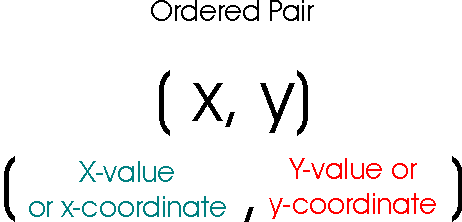
The first number in the ordered pair is the x-value or x-coordinate and the second is the y-value or y-coordinate. You can help yourself remember the order because it is alphabetical, x comes before y in the alphabet and it comes before y in an ordered pair. In an ordered pair the x-values and y-values can be positive, negative, or zero. Examples of orderd pairs are:
(-3, 4), (5,-8), (0,6), (-7,-7) and, (9,5).
This is called an ordered pair because the order of the numbers is important. If you put the numbers in the wrong spots the point or ordered pair is not always the same as you can see in the example below. The x-coordinate tells how far away from the y-axis a point is and the sign of the coordinate tells which side of the y-axis it is on (positive to the right, negative to the left). The y-coordinate tells how far from the x-axis the point is and the sign of the coordinate tells whether it is above or below the x-axis (positive is above and negative is below). You will see examples of this in the plotting points section later.
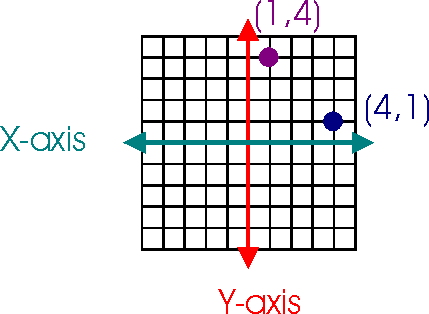
The ordered pair (1,4) is not the same as the ordered pair (4,1). In the ordered pair (1,4) the 1 is the x-value and the 4 is the y-value. In the ordered pair (4,1) it is reversed, now the x-value is 4 not 1 like before and the y-value is 1 not 4 like before. the two points are not the same.
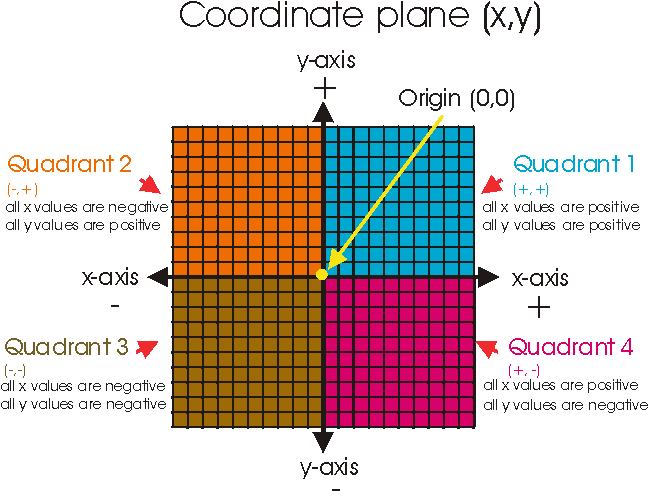
The x-axis and y-axis divide the coordinate plane into four sections called quadrants. Sometimes they are labeled using Roman numerals QI, QII, QIII, and QIV. Other times they are labeled Q1, Q2, Q3, and Q4. Either way is acceptable but it is easy to forget how to label them. Here is a way to help you remember. If you write the letter "C" in a coordinate plane so that the origin is inside the center of the "C" you will pass through the quadrants in the order they are supposed to be labeled. You start in the upper right-hand corner Q1 , then you pass through the upper left-hand corner Q2 , then you pass through the lower left-hand corner Q3 , and finally you end up in the bottom right-hand corner Q4 .
Look at the coordinate plane and notice that the values of the x-coordinates and y-coordinates are either positve or negative depending on the quadrant the point lies in. For instance the x-coordinate and y-coordinate are both positive for any point inside Q1 (quadrant 1). Is it possible for a point to be on the coordinate plane and not be in a quadrant? Yes. Have you ever seen a cat sitting on a fence teasing the dog in the yard below? The cat is not in any back yard, it is on the fence. Points are just like cats, they can be in a back yard (a quadrant) or they can be on the fence (on an axis). If a point is on the x-axis it has a y-coordinate of zero because it is not above or below the x-axis. If a point is on the y-axis it has an x-coordinate of zero because it is not to the left or right of the y-axis.
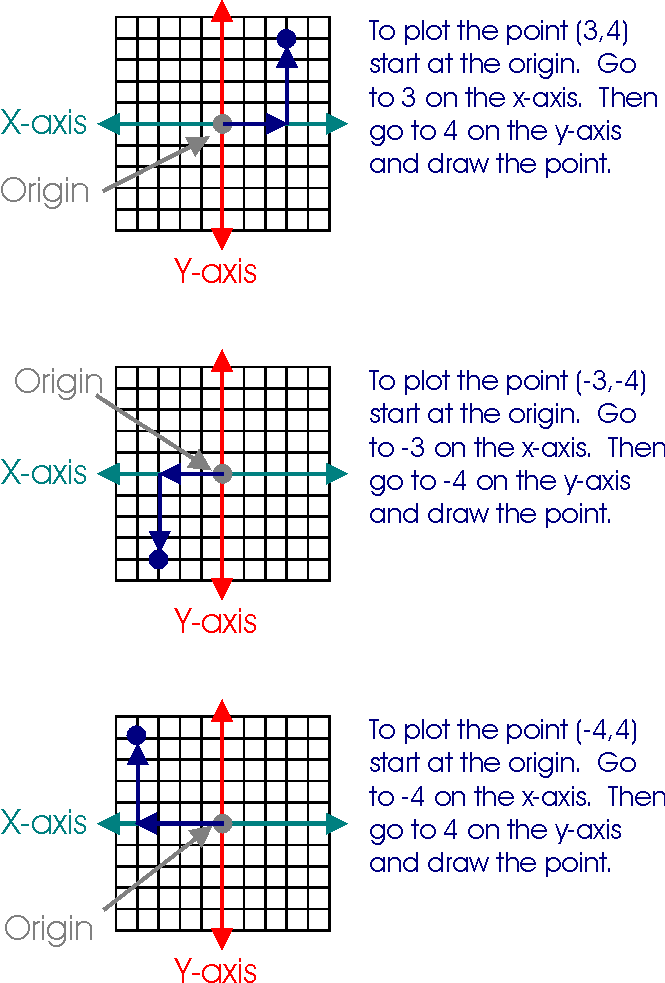
An ordered pair represents a point on the coordinate plane usually just called a point. Every point on the coordinate plane has its own unique (which means one of a kind, not like any other) ordered pair. To plot a point means to draw a dot on the coordinate plane where the point belongs. Start at the Origin and go to the x value on the x axis. From there go to the y value on the y axis and plot the point.

Reading points in the coordinate plane is just like plotting them but in reverse. The point is already on the graph, all you have to do is start at the Origin and go left or right until you line up with the point. The number of spaces you moved is your x-value. The sign of the x-value depends on whether you moved left (negative sign) or right (positive sign). Then go to the point. The number of spaces you moved is the y-value. The sign of the y-value is positive if you moved up or negative if you moved down.
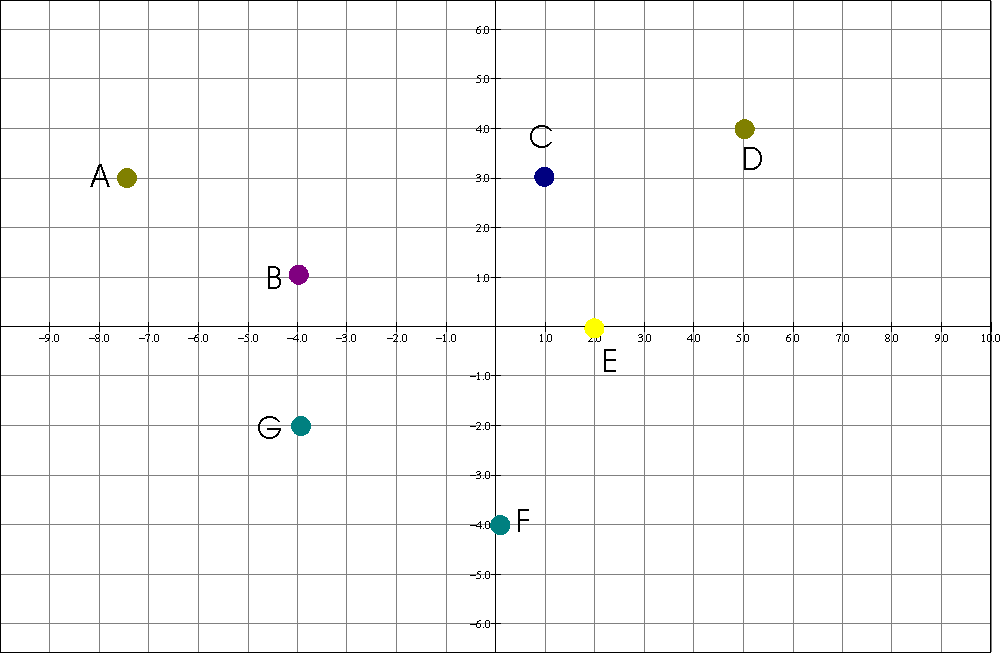
What are the coordinates of each point?